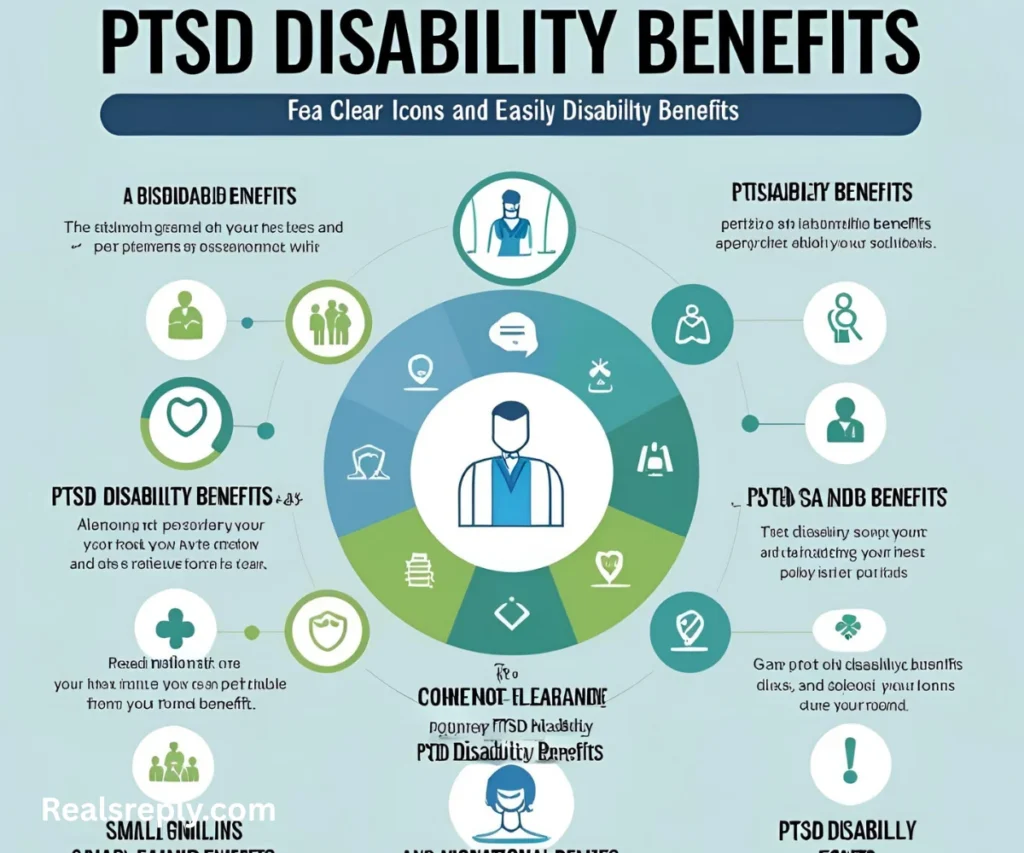Imagine living with the weight of post-traumatic stress disorder (PTSD), where daily life feels like an uphill battle.
Flashbacks, anxiety, or nightmares can make work and relationships tough.
For many veterans and civilians, applying for PTSD disability benefits offers hope for financial and emotional support.
But knowing what to say to get PTSD disability approved can feel overwhelming.
This guide breaks it down into clear, actionable steps to help you communicate your needs effectively.
Whether you’re a veteran filing with the VA or a civilian seeking Social Security Disability Insurance (SSDI), we’ll explore how to share your story with confidence and clarity to improve your chances of approval.
Understanding PTSD Disability Benefits

PTSD disability benefits provide financial support for those whose symptoms prevent them from working or managing daily tasks. The Department of Veterans Affairs (VA) offers benefits for veterans, while SSDI supports civilians. To succeed, you must show how PTSD impacts your life.
Example Scenario: John, a veteran, struggles with nightmares and avoids crowded places. He applies for VA benefits, clearly explaining how PTSD stops him from holding a job.
What to Say: “My PTSD symptoms, like flashbacks and severe anxiety, make it impossible to maintain steady employment or focus on tasks.”
What Not to Say: Avoid vague statements like, “I’m stressed a lot.” Be specific about symptoms and their impact.
Gathering the Right Medical Evidence

Strong medical evidence is key to a successful PTSD disability claim. This includes doctor’s notes, therapy records, and diagnoses from licensed professionals. The VA or Social Security Administration (SSA) needs proof that your PTSD is severe and ongoing.
Example Scenario: Sarah, a car accident survivor, collects therapy notes showing her panic attacks and inability to drive. This strengthens her SSDI claim.
What to Say: “My psychiatrist diagnosed me with PTSD, and my therapy records show weekly panic attacks that prevent me from working.”
What Not to Say: Don’t say, “I think I have PTSD.” Always provide official diagnoses and detailed records to support your claim.
Describing Your Symptoms Clearly
When explaining your PTSD, focus on how symptoms like flashbacks, insomnia, or hypervigilance affect your daily life. Be honest and specific to show the full impact.
Example Scenario: Mike, a first responder, describes how loud noises trigger flashbacks, making it impossible to work in noisy environments.
What to Say: “Loud sounds cause flashbacks that leave me disoriented for hours, preventing me from working or socializing normally.”
What Not to Say: Avoid downplaying symptoms, like, “I just get nervous sometimes.” Highlight how symptoms disrupt your routine.
Explaining Work Limitations
The VA and SSA want to know why PTSD prevents you from working. Explain how symptoms limit your ability to perform job duties or maintain consistent employment.
Example Scenario: Lisa, a teacher, can’t manage classrooms due to anxiety and irritability caused by PTSD. She details this in her claim.
What to Say: “My PTSD causes severe anxiety, making it impossible to handle stressful work environments or meet deadlines consistently.”
What Not to Say: Don’t say, “I don’t like my job.” Focus on how PTSD symptoms, not personal preferences, affect your work.
Talking to Doctors and Evaluators
During medical evaluations, be open about your symptoms. Doctors and evaluators need clear details to assess your condition accurately.
Example Scenario: Tom, a veteran, tells his VA doctor about his nightmares and avoidance behaviors, leading to a higher disability rating.
What to Say: “I experience nightmares three times a week and avoid public places, which impacts my ability to function daily.”
What Not to Say: Avoid minimizing symptoms, like, “I’m fine most days.” Be honest to ensure evaluators understand your struggles.
Writing a Personal Statement
A personal statement lets you share your story in your own words. Use it to explain how PTSD affects your life, work, and relationships.
Example Scenario: Emily writes about how PTSD from childhood trauma causes her to miss work due to panic attacks.
What to Say: “PTSD from past trauma causes daily panic attacks, making it hard to maintain relationships or hold a steady job.”
What Not to Say: Don’t write vague statements, like, “Life is hard.” Be specific about symptoms and their impact.
Avoiding Common Mistakes
Mistakes like incomplete forms, missing medical records, or unclear explanations can delay or deny your claim. Double-check everything before submitting.
Example Scenario: Mark’s claim was denied because he forgot to include therapy records. He resubmitted with complete evidence and won.
What to Say: “I’ve included all medical records and a detailed statement about how PTSD affects my daily life and work.”
What Not to Say: Avoid saying, “I don’t have all my records.” Gather all documents to strengthen your case.
Conclusion
Navigating a PTSD disability claim can feel daunting, but knowing what to say to get PTSD disability approved makes a big difference.
Be honest, specific, and thorough when describing your symptoms, work limitations, and medical evidence.
Use clear examples to show how PTSD impacts your life.
With the right approach, you can build a strong case for the support you deserve.
Stay organized, seek help from professionals if needed, and don’t give up. Your story matters, and the benefits can help you focus on healing and moving forward.




